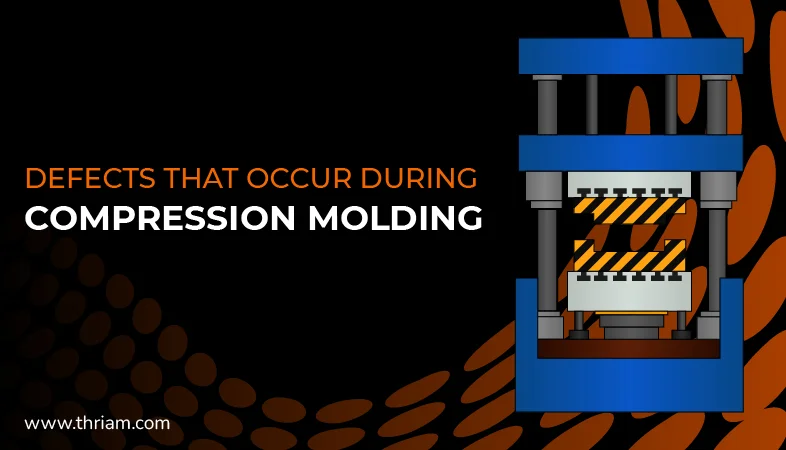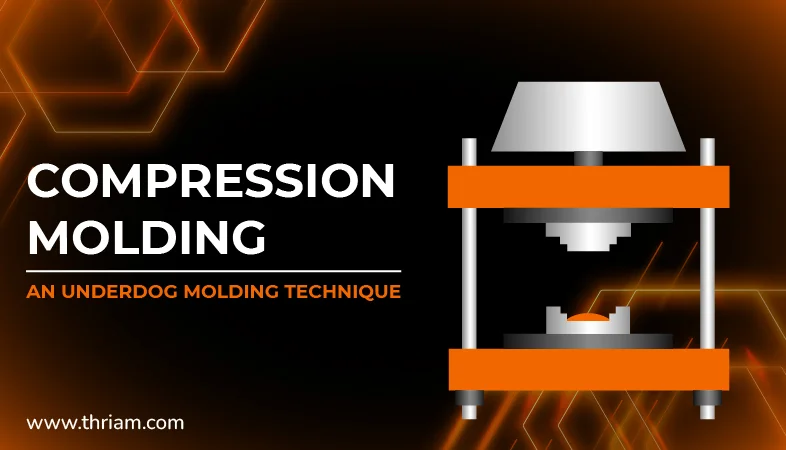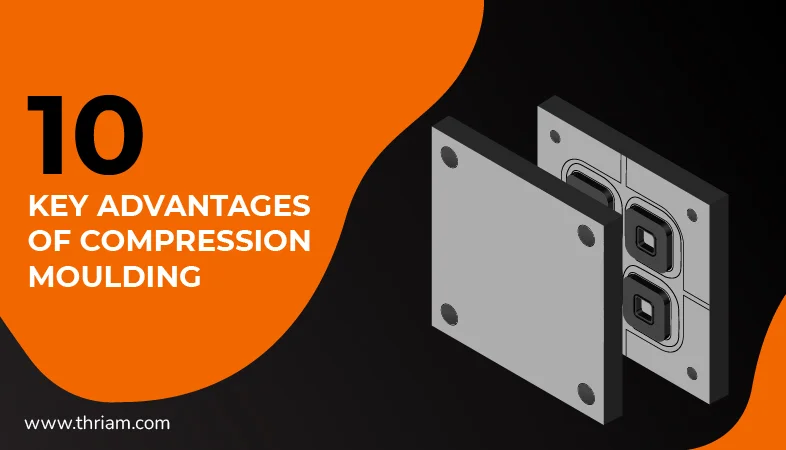The Roadblocks of Compression Moulding: Overcoming 7 Common Hurdles with Ease
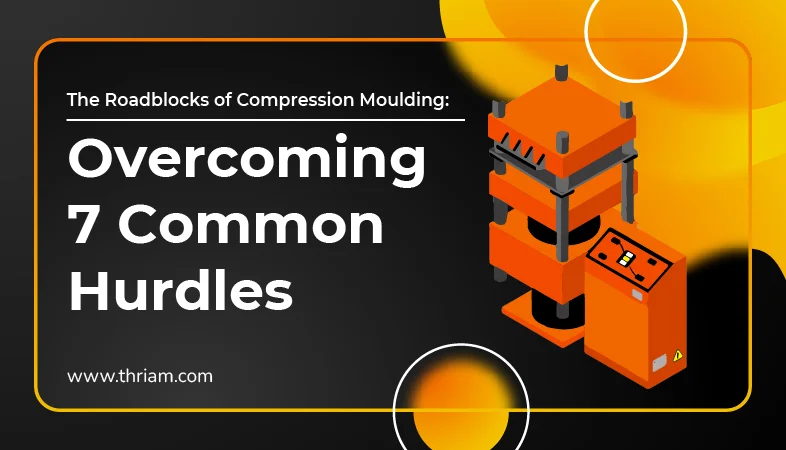
Compression moulding is a widely used manufacturing process that involves the shaping of materials by applying pressure and heat to a specified mould cavity. Material is loaded into the mould cavity, the mould is closed, and the material is compressed to take the shape of the mould. Once cooled, the part is ejected from the mould. This process is commonly used in industries such as automotive, aerospace, construction, and consumer goods.
Compression moulding can be used with a wide range of materials, including sheet moulding compound (SMC), glass mat thermoplastic (GMT), rubber, thermosetting resins such as epoxy and phenolic, and thermoplastic resins including polypropylene, nylon, and high-density polyethene (HDPE). Fibres such as fibreglass, aramid, and carbon fibre can be added to enhance the strength and stiffness of the final products.
There are several advantages to compression moulding. One of the main advantages is its ability to produce large, relatively simple parts in high volumes. The process is also cost-effective, as it requires minimal setup time and can use less expensive materials. Compression moulding can also result in parts with uniform wall thickness, consistent dimensions, and high resistance to impact and wear. The process can even be customized to meet specific requirements for different applications.
Compression moulding can also offer superior surface finishes, as the moulding process allows for good surface detail and minimal flash. The mould is typically heated above the melting point of the material, so it flows easily to fill the mould cavities, which is particularly useful for complex geometries.
While compression moulding offers several advantages, it also comes with its fair share of challenges. In this blog, we will explore the seven most common challenges in compression moulding and discuss effective strategies to overcome them.
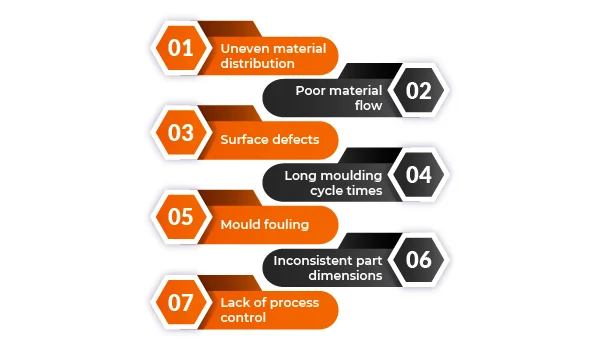
I. Uneven material distribution
In compression moulding, one of the significant challenges is achieving even material distribution within the mould cavity. Uneven material distribution can lead to weak spots, inconsistent part dimensions, and compromised product quality. To overcome this challenge, it is essential to ensure proper material flow and distribution during the moulding process. Some strategies to overcome this challenge include:
- Design the mould cavity with proper venting and gating systems to facilitate smooth material flow.
- Optimize the mould temperature to ensure uniform heat distribution throughout the material.
- Use fillers or reinforcements in the material formulation to enhance flow properties and prevent material segregation.
II. Poor material flow
Poor material flow is another common challenge encountered in compression moulding. Inadequate flow can result in incomplete mould filling, voids, and inconsistent part dimensions. To address this challenge, consider the following techniques:
- Modify the material formulation by adjusting the viscosity and flow characteristics to promote better material flow.
- Design the mould cavity with appropriate gate sizes and locations to facilitate smooth and uniform material flow.
- Optimize the processing parameters, such as temperature and pressure, to ensure optimal material flow without compromising the integrity of the moulded parts.
III. Surface defects
Surface defects, such as cracks, sink marks, and blemishes, can significantly impact the aesthetic appeal and usability of compression moulded products. To minimize surface defects, the following steps can be taken:
- Analyze the root causes of surface defects, such as improper mould design, material degradation, or inadequate mould release agents.
- Optimize the mould temperature and cooling system to prevent premature solidification and reduce the likelihood of surface defects.
- Implement proper mould maintenance and cleaning procedures to ensure the mould surface remains free from debris or contaminants.
IV. Long moulding cycle times
Extended moulding cycle times can adversely affect production efficiency and increase costs. To address this challenge, consider the following strategies:
- Conduct a thorough analysis of the moulding process to identify potential bottlenecks and areas for optimization.
- Optimize the mould and material temperature to reduce cooling time.
- Evaluate the use of advanced mould release agents to accelerate the demoulding process.
V. Mould fouling
Mould fouling occurs when residue or contaminants accumulate on the mould cavities, resulting in compromised part quality and increased rejection rates. To combat mould fouling, follow these recommendations:
- Implement a regular cleaning and maintenance schedule to prevent the build-up of residue on the mould surface.
- Apply appropriate mould release agents to minimize material adhesion and reduce the likelihood of mould fouling.
- Ensure proper ventilation and filtration systems are in place to prevent the deposition of airborne contaminants on the mould.
VI. Inconsistent part dimensions
Inconsistency in part dimensions can lead to fitment issues and product rejection. This challenge can be overcome by considering the following measures:
- Carefully analyze the mould design to ensure uniform cavity dimensions and gate locations.
- Implement strict process control measures, such as monitoring temperature, pressure, and timing, to ensure consistent moulding outcomes.
- Implement a robust quality assurance system to verify and inspect the dimensions of moulded parts at regular intervals.
VII. Lack of process control
Achieving consistent and repeatable results in compression moulding requires precise process control. To address this challenge, consider the following recommendations:
- Invest in advanced monitoring and control technologies to track key process parameters during moulding.
- Implement statistical process control techniques to identify variations and take corrective actions promptly.
- Train and educate the operators and technicians on the importance of process control and provide them with the necessary tools and knowledge to achieve it.
Conclusion
Compression moulding offers numerous benefits, but it also presents several challenges that need to be overcome for successful production. By addressing the seven common challenges discussed in this blog and implementing the strategies provided, manufacturers can optimize their compression moulding processes and achieve consistent, high-quality moulded products.
